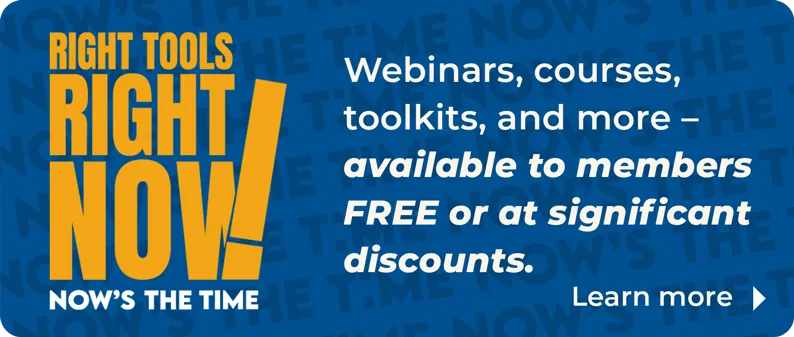
If you want to break into a segment of the market you’ve never served before, the way you communicate with current clients might not work for the buyers and sellers you’re trying to reach. A new customer base, whether it’s relocating military families, downsizing retirees, or divorced condo seekers, will have a different set of needs and values that you may not be accustomed to and that require specific attention. Even if you think a one-size-fits-all approach to client communications makes you helpful to a wider audience, your business likely won’t grow at the pace you hoped, says Kelly McDonald, a marketing consultant and author of How to Market to People Not Like You.
Start with low-pressure deals as you enter a new market so you can focus on learning the communication style of your clients without the stress of an overly complicated transaction, McDonald suggests. “Look for the low-hanging fruit to find your opportunity markets,” she says. For example, if you want to serve luxury buyers, try starting with recent college grads who work in high-growth fields. They may be looking for a home on a $50,000 salary now—but they’ll likely be able to afford a million-dollar property in the future. Along the journey, you’ll glean insights into how to target your messaging to buyers like them.
But communication isn’t just about the verbal (or electronic) back and forth between you and your clients. How you present yourself to the group you want to serve sends a strong message about your fitness to be their real estate guide. McDonald recalls meeting an agent from Oklahoma who realized none of his colleagues were marketing to the gay community in town. So he set up an information booth about his business during the local gay pride parade and sponsored other events. “Getting involved in the community says, ‘I see you. I get you. I understand what your priorities are, and I’m here for you,’” McDonald says.
The Trust Factor
As you begin to reach out to prospects in a new market—especially those with whom you have significant cultural differences—gaining their trust could be challenging. Steven Levitt, a University of Chicago economics professor and coauthor of Freakonomics and Think Like a Freak, notes that the balance of power in agent-client relationships favors the real estate pros because they have more knowledge and information about the buying and selling process. Though that speaks to their value to consumers, Levitt says, it can also make their clients feel less in control of the transaction. “A good agent finds ways to powerfully communicate that information to his or her client in a way that makes the experience both financially and emotionally fulfilling.”
While data may paint a clear financial picture for your clients, storytelling taps into their emotional needs, Levitt says. Telling a story about how you helped past clients who faced similar obstacles in their home search will show prospects that you are both sensitive to their situation and capable of finding solutions for them. Even better, make your testimonials the central element of your marketing when targeting a new and diverse clientele. Illustrating a common human experience can help you clear communication hurdles. “Good stories don’t always have to include data,” Levitt says. “If I have former clients who will stand up and say, for example, that I sacrificed a part of my commission to make sure they got the perfect house—that’s more powerful than any set of data.”
Equally important is the language you use when telling those stories. “When we use exaggerated language to convey something positive or minimal language for something negative, it comes across as disingenuous,” says Erin Meyer, a global business communications expert and author of The Culture Map: Breaking Through the Invisible Boundaries of Global Business. Examples of this might be overstating the size of a room as “gargantuan” or downplaying disruptive neighborhood noise as “urban life.”
Such miscommunication is more likely to occur when practitioners are working with clients from other cultures than their own. You may also need to adjust your thinking when interpreting how your clients communicate to you. “If you’re working with people from a culture that gives direct negative feedback, you may think they hate the house when that’s not really what they’re saying,” Meyer says. “Your reaction could be seen as breaking the relationship.” To see how your communication preferences match up with other cultures, take Meyer’s Culture Map quiz at erinmeyer.com/rconf-expo.
Communicate by Showing Up
Your availability also communicates your willingness to be there for your clients, so don’t endeavor to take on a new niche if you have an already packed schedule. Learning the ins and outs of a new client base requires a time commitment you should be able to make. “Someone who wants speed and efficiency is very different than someone who wants you to spend time with them,” McDonald says. “There are customers who value face-to-face interaction, and they may want to see your office because it speaks to your level of success. A 25-year-old may not care about this, but a 65-year-old might.”
No matter how busy you are, don’t look at working longer hours with a new client as a waste of time. Otherwise, you’re guaranteed to lose the sale, Meyer adds. And this is especially true of those from other cultures. “If you want to build trust with a client in Brazil, you’d sit down for a cup of coffee,” she says. “In Asia, you’d set up a meeting and spend an hour just getting to know each other.”
Don’t have time for coffee or lunch? “OK, well, do you have time to succeed?” Meyer says, noting that skipping such social niceties may well cost you business.
And as a rule of thumb that every practitioner should know: Don’t target a market you’re not truly interested in serving just for the sake of increasing sales. “Don’t pick something that you can’t go all in on with your whole heart and mind,” McDonald says. “Let’s say you don’t know anything about the military and it doesn’t interest you. Then don’t serve those customers. You have to be interested in helping them more than selling them. If you help me, you don’t have to sell me. I’m yours.”








